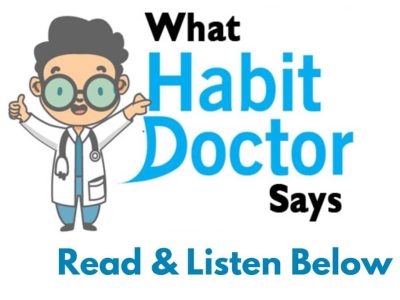Yes, it is difficult. Behavioural change is hard. No doubt about it. For example, At least eight times out of ten you are likely to go back to your old habit or pattern than you stick on to a new one.
Now let check why is that happen? What is the biggest reason for the failure of a new habit and what all we can do to get positive life changes and to stick to a new habit?
Don’t even I have the correct and perfect answer to all this. But after two years of researching and warring about the science and pattern f behaviour change, let me share you the most practical insights that I have observed so far. Let’s do it step by step:-
Problem 1. Trying to do everything at a moment
Solution: – Take one at a moment and do it well
The consensus among the behavioural change researchers has explained that you should concentrate and try to bring changes only on a very small number of habits at a time. Dr Fogg from Stanford University suggested that the highest number of habits that you can try to change at a time is three.
I think so, as B.J. Fogg’s said tiny habits program is great. How tiny? His suggested habits include drinking a glass of water when we wake up from the bed, Doing on push up per day or saying ” It’s going to be a great day” soon after you wake up. So if you make your new habits that small, you can easily work on no more than three habits at a time.
On my viewpoint taking one new habit at a time and making it as a routine, then move on to the next habit, at a time and make it as a routine, then move on to the next one. For example, I will take 3 months to get up early and going for jogging to make it as a routine work. Once it became a part of my day. I will look for the next habit that has to include in my lifestyle. After becoming a routine, next I will move on to the next. And so on. I think you got the idea.
Bonus solution: – Selecting a keystone habit
A keystone habit is a behaviour that naturally pulls your rest of the life in a line. For example, if I take weightlifting as my keystone habit, /when I go to the gym for my keystone habit it will create a ripple effect in other areas of my life too. Not only I can get the benefits of a workout, but I can also enjoy a wide range of secondary benefits. I tend to eat better when I am working out consistently. I used to sleep bette3r at night and can wake up early with more energy in the morning.
Note that I didn’t do or focus anything to built better habits for my focus that is like my nutrition, my sleep or my energy. I just kept the focus on my keystone habit and those other areas were improved as well. That’s why the keystone habit is powerful. They will invade into the other areas of your life. You have to figure out what’s your keystone habit is. Some popular example includes exercise, meditation or budgeting your monthly wages.
Problem 2:- Starting With a too big habit
Solution:- Leo Babauta has said once “Make it so easy you can’t say no”
The most difficult part of a new habit is the starting of that behaviour. It takes a lot of motivation to go to the gym for a workout after doing work at your office, but once you ready to begin the workout it does not take much effort to finish it. For this reason, one of the best ways that you can do for starting a new behaviour is to start with a small habit. If we start a new habit it should not be threatening to our lifestyle. Starting with a behaviour that is too small seems easy and reasonable to do it every day.
If we want to do 50 push up per day start with 5 in 10 for the first week and slowly increase the number of pushups day by day.
If you want to start reading habit, start reading two or three pages every night
Finally, if you want to start meditation, try to meditate for one minute each morning. Gradually increase the timings.
Problem 3:-Looking a result
Solution: – Focus on the behaviour and not the outcome.
Mostly every conversation based on goal and resolution is mainly focused on some kind of results. What do you want to achieve? How much you want to save? How many weight do you want to lose? How many glasses of water you have to drink? How many books you have to read?
Normally we all are outcome-focused because we all want new behaviour or change in our lifestyle to deliver change in our life.
The real problem is that new goals don’t deliver new results and a new lifestyle. Now lifestyle is not an outcome, it is a process. For this reason, all of our energy should invest in building better practices and not chasing better results. Practices are what make behaviour into habits. If you want a new habit, you have to fall in love with a new practice.
Problem 4:- Don’t change our Environment
Solution: – Built an environment that promotes good habit.
I have never seen a person who continuously sticks to a positive habit in a negative environment. We can frame this statement in different ways.
If we are constantly surrounded by unhealthy food it is nearly impossible to make healthy food all time.
If we are constantly surrounded by negative people it is nearly impossible to remain positive all the time.
If we are constantly disturbed by text messages, notification, emails, questions and other digital distractions it is nearly impossible to focus on a single task.
If we are constantly surrounded by alcohol it is nearly impossible to not to drink.
And so on.
We rarely realize it but our behaviours are often a simple reason to the environment we find ourselves in. We can assume that the lifestyle we live today is largely the product of the environment you live every day. The biggest change that will make a new habit easier is performing it an environment that has been designed to make that habit succeed. For example, if your New Year resolutions to reduced stress in life and maintain a more focused manner.
Let’s check the current situation:-
Every morning the alarm of your phone goes on and we pick up the phone and turn the alarm off. Immediately we will go to check our e-mails and social media websites. Even though we had already read the e-mails and messages, it will stay in our head even after we had replied. We may have already thought about the messages that we have already replied and also browsed the latest news on Facebook, Twitter and Instagram, so those messages and heading are swimming around our mind too. At that time we have not even dressed yet but those unnecessary thoughts had already distracted and stressed as.
If this scene seems to be familiar and if we want to change it, the easiest way is to change the environment. That is putting the phone near our bed and also buys an alarm clock and charges our phone somewhere another room.
We can also have an option to change our digital environment too. Turn off all the push notification, remove all the social media apps from the home screen and hide them somewhere else on your phone.
If the environment doesn’t change probably we won’t change.
Problem 5:- Neglecting Small Changes
Solution: – Add one per cent each day
If you had ever listened to someone who had to talk about their goals, you may hear that they are describing the minimum that they want to achieve.



your blog is the melody of well-being in the cacophony of health advice. Your notes resonate with harmony